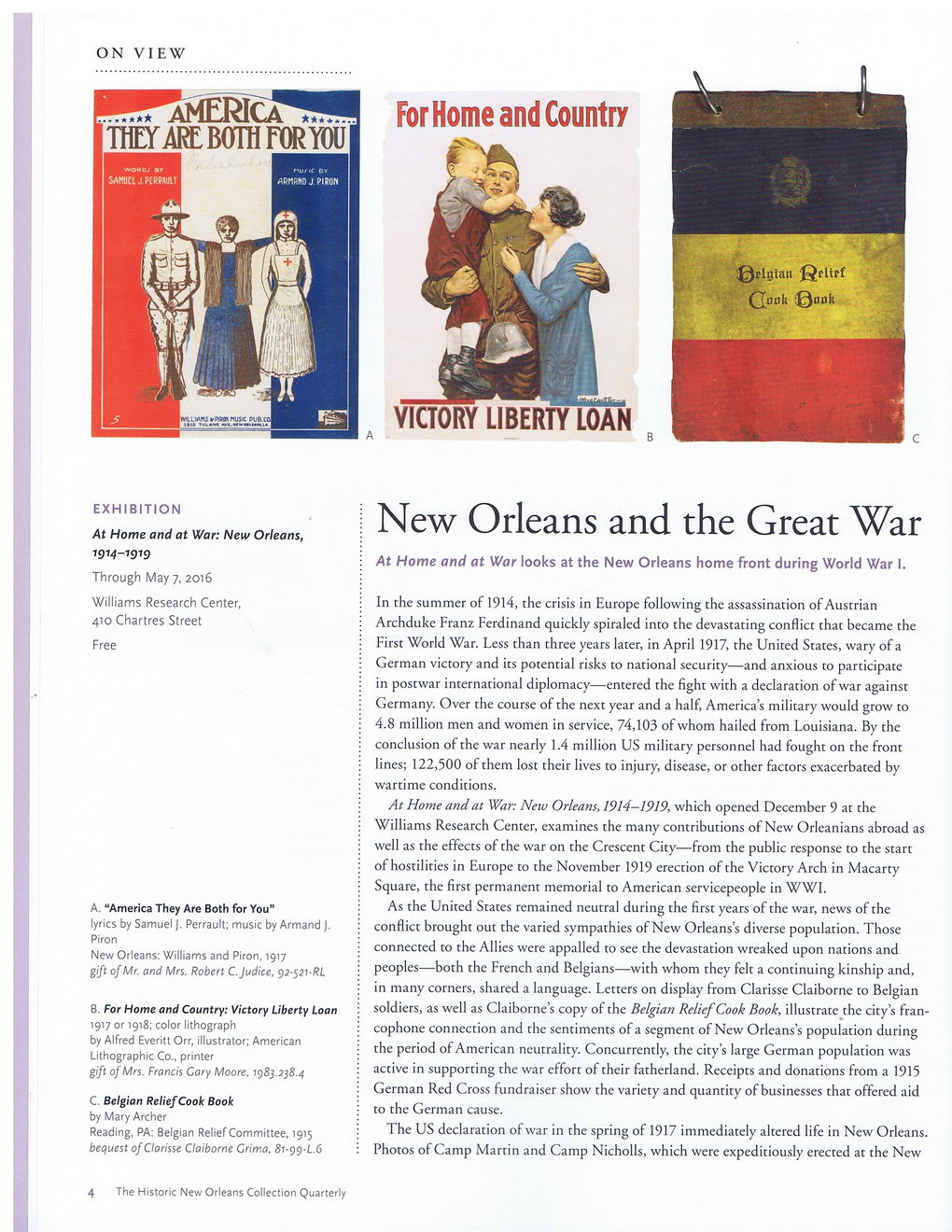This text was obtained via automated optical character recognition.
It has not been edited and may therefore contain several errors.
ON VIEW EXHIBITION At Home and at War: New Orleans, 1914-1919 Through May 7, 2016 Williams Research Center, 410 Chartres Street Free A. “America They Are Both for You” lyrics by Samuel J. Perrault; music by Armand J. Piron New Orleans: Williams and Piron, 1917 gift of Mr. and Mrs. Robert C.Judice, 9 2-521-RL B. For Home and Country: Victory Liberty Loan 1917 or 1918; color lithograph by Alfred Everitt Orr, illustrator; American Lithographic Co., printer gift of Mrs. Francis Cary Moore, 1983.238.4 C. Belgian Relief Cook Book by Mary Archer Reading, PA: Belgian Relief Committee, 1915 bequest of Clarisse Claiborne Grima, 87-99-L.6 4 The Historic New Orleans Collection Quarterly New Orleans and the Great War At Home and at War looks at the New Orleans home front during World War I. In the summer of 1914, the crisis in Europe following the assassination of Austrian Archduke Franz Ferdinand quickly spiraled into the devastating conflict that became the First World War. Less than three years later, in April 1917, the United States, wary of a German victory and its potential risks to national security—and anxious to participate in postwar international diplomacy—entered the fight with a declaration of war against Germany. Over the course of the next year and a half, America’s military would grow to 4.8 million men and women in service, 74,103 of whom hailed from Louisiana. By the conclusion of the war nearly 1.4 million US military personnel had fought on the front lines; 122,500 of them lost their lives to injury, disease, or other factors exacerbated by wartime conditions. At Home and at War: New Orleans, 1914—1919, which opened December 9 at the Williams Research Center, examines the many contributions of New Orleanians abroad as well as the effects of the war on the Crescent City—from the public response to the start of hostilities in Europe to the November 1919 erection of the Victory Arch in Macarty Square, the first permanent memorial to American servicepeople in WWI. As the United States remained neutral during the first years of the war, news of the conflict brought out the varied sympathies of New Orleans’s diverse population. Those connected to the Allies were appalled to see the devastation wreaked upon nations and peoples—both the French and Belgians—with whom they felt a continuing kinship and, in many corners, shared a language. Letters on display from Clarisse Claiborne to Belgian soldiers, as well as Claiborne’s copy of the Belgian Relief Cook Book, illustrate ^the city’s francophone connection and the sentiments of a segment of New Orleans’s population during the period of American neutrality. Concurrently, the city’s large German population was active in supporting the war effort of their fatherland. Receipts and donations from a 1915 German Red Cross fundraiser show the variety and quantity of businesses that offered aid to the German cause. The US declaration of war in the spring of 1917 immediately altered life in New Orleans. Photos of Camp Martin and Camp Nicholls, which were expeditiously erected at the New

New Orleans Quarterly 2016 Winter (06)